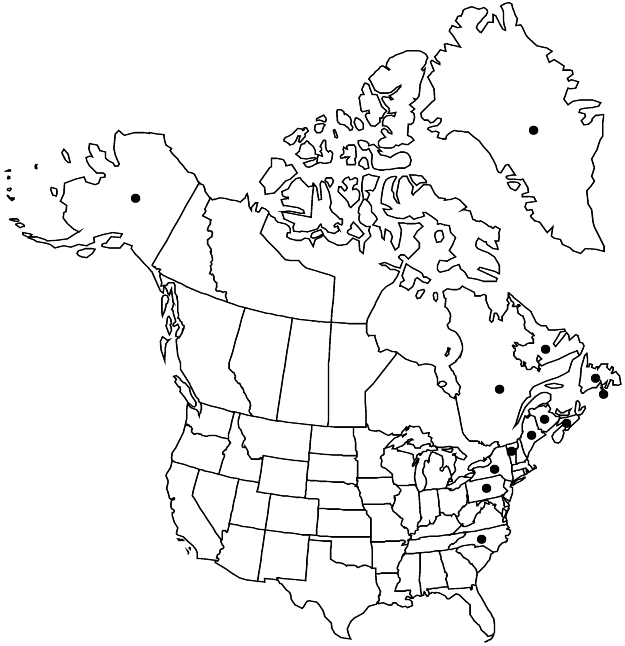Rhodiola rosea
Sp. Pl. 2: 1035. 1753 ,.
Plants mostly dioecious. Rootstock erect or spreading, 0.5–2.5 cm diam. Floral stems deciduous, 5–40 × 0.2–0.6 cm. Leaf blades pale green, usually glaucous, ovate to obovate or oblong, 1–5 × 0.4–1.5 cm, margins entire or dentate, apex acute to obtuse. Inflorescences corymbose cymes, dense, to 150-flowered, to 6.5 cm diam. Pedicels ca. 3 mm. Flowers mostly unisexual, 4(–5)-merous; sepals linear-oblong or lanceolate, unequal, 1–2.5 mm; petals pale yellow to greenish yellow, sometimes red at tips, oblong, 1–3.5 mm, shorter than stamens, in staminate flowers spreading, hooded, 0.7–1.1 mm wide, in pistillate erect. Follicles 4–9 mm; beaks spreading. Seeds winged at both ends, pyriform, 1.7–2.2 mm. 2n = 22.
Phenology: Flowering summer.
Habitat: Moist, rocky ledges and talus of coastal cliffs in the north and of north-facing cliffs
Elevation: 0-1900 m
Distribution

Greenland, St. Pierre and Miquelon, N.B., Nfld. and Labr., N.S., Que., Alaska, Maine, N.Y., N.C., Pa., Vt., Eurasia.
Discussion
R. T. Clausen (1975) noted significant differences among wild populations of Rhodiola rosea [as Sedum rosea] but found that most lost significance when the plants were grown together at Ithaca. He found that staminate plants outnumber pistillate by about 1.2–1.9 to 1 and that an occasional plant has both staminate and pistillate flowers in the same cyme. From meiosis in staminate plants A. Levan (1933) reported one bivalent as slightly heteromorphic and possibly a sex-chromosome pair of the XY type, but C. H. Uhl (1952) noted no heteromorphic bivalents. Roseroot has a long history as a medicinal plant; Clausen summarized what was known of its chemistry and its uses. The name “roseroot” is from the roselike odor of the dried rootstock.
Selected References
None.